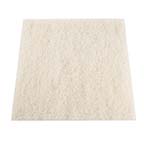Additional sizes may be available!
Additional sizes may be available! Email me when available|
Product Notes:
· We cannot ship item CD-97868 to Alaska. |
Overview
| * | Premium aquarium filter media for custom mechanical filtration |
| * | Cut-to-fit filter media pads accommodate most aquarium filters |
| * | Super-fine density media traps fine particulates from aquarium water |
Super-fine density filter pad boosts debris-removing mechanical filtration for cleaner, clearer aquarium water. Drs. Foster and Smith Super Fine (Lime) Pads effectively remove fine particle matter from the aquarium water column for improved aquarium water clarity. An ideal, budget-friendly way to boost mechanical filtration and help protect biological filter media from clogs and debris buildup that can affect overall aquarium water quality and health.
Use with our Fine Density Beige Filter Pad or Coarse Black Pads to layer varying densities for optimum mechanical filtration. Simply cut Drs. Foster and Smith Super Fine (Lime) Pads to fit any aquarium filter.
Drs. Foster and Smith Super-Fine (Lime) Pads measure 1" thick and available in 12" x 12", 24" x 24", and 28" x 10' roll. Made in the USA.
Fulfill virtually any filtration need with our super-convenient selection of cut-to-fit pads available in a variety of styles and densities. Drs. Foster and Smith Mechanical Filter Media available in Carbon Pads, Coarse Black Pads, Bonded Blue Filter Pads, Fine Beige Pads, and Micron Felt Pads .
Benefits of Mechanical Filtration
Mechanical filtration can greatly improve the health of most aquariums, and is also important for efficient biological filtration. The process is simple: mechanical filter media strains solid debris such as fish excrement, sludge, uneaten food, or dust from your aquarium as water passes through.
The debris-laden mechanical filter media can then be easily removed and rinsed or replaced. Mechanical filter media not only reduces the amount of solids in your water, but more importantly, it keeps debris from reaching your biological media, building up, and creating dead spots where nitrifying bacteria can't reproduce.











